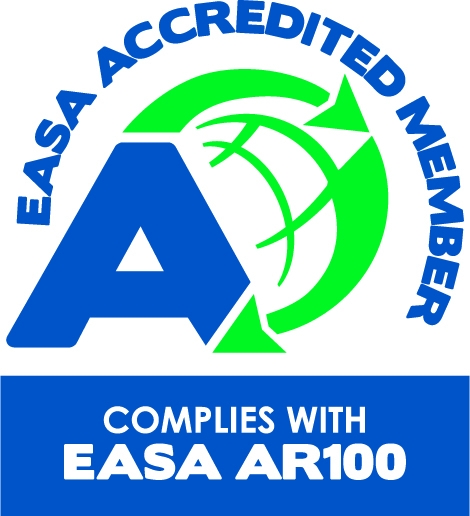This quarter’s newsletter will feature an introduction to our new sales staff, some events we will be attending, an article on the Energy Independence and Security Act effective December 19, 2010, and an article on variable frequency drive speeds. We would like to thank you for subscribing to this newsletter and hopefully, it provides you some helpful information to eliminate some headaches.
Coming Events
Northwest Electric’s sales staff will be attending the Dakota Farm Show held at the Dakota dome from January 4 to January 6. We will also be attending the Nebraska Well Drillers show held at the Lancaster Event Center in Lincoln, NE from February 16 to February 17. Please stop by and say hello! We would also like to introduce David Innis and Travis Ellis to our sales staff. David brings (years) years of sales experience to the Lincoln and Omaha areas. Travis brings (years) years of sales experience to the Sioux City area.
The Energy Independence and Security Act
The Energy Independence and Security Act (EISA) builds upon the previous EPAct (Energy Policy Act of 1992) updating mandated efficiency standards for general purpose,three-phase AC industrial motors from 1 to 500 horsepower which is manufactured for sale in the US. This update applies to motors manufactured after December 19, 2010.
Only 1-500 HP motors with 3 digit frame NEMA numbers (143T and up) are included in EISA. This also includes IEC frame designations. However, not every three-phase configuration is included. Integral gear motors, integral brake motors, inverter duty motors with windings optimized for ASD use that cannot be line-started, and design D high-slip motors are exempt from the EISA compliance.
The EISA does not require current, in-use motors to be replaced. Nor does it require current inventories to be replaced. The law only applies to motors manufactured after December 19, 2010. In order to raise a motor’s efficiency to the appropriate EISA level, manufacturers must add more materials to the motors. The new motor designs will require more and better laminations and more magnet wire. This will require manufacturers to have a price increase due to the addition of active material. If you would like more information on this change, please contact your sales representative or your local Northwest Electric branch.
Controls Spotlight - How Slow Can You Go
A very common question that often arises when dealing with variable frequency drive applications is “What is the speed range my motor is capable of?” in essence, how slow can you go? The most important consideration with reducing the speed of an electric motor is thermal management. For a standard OPD or TEFC motor, there is a fan attached to the shaft that circulates air through or over the motor to help keep it cool. As the speed of the motor is reduced, the cooling capability also decreases. To help guide the user most manufacturers will rate their motors speed capabilities by way of an allowable speed range or turndown ratio. This ratio is the amount of speed reduction that the motor is rated to safely handle the load. Common turndown ratios are 10:1, 12:1 or 1000:1, however, most users do not really understand what this means for their applications. Let’s look at an example of a 1800RPM motor rated for at 10:1 speed ratio. This motor is rated to handle a load down to 180 RPM or down to 6Hz. WEG rates most of their non-vector motors a ta 12:1 turndown ratio which means they are suitable to operate a 1800RPM motor down to 150RPM or to 5Hz. A turndown ratio of 1000:1 to one is really a manufacturer’s way of stating that the motor is considered a “Vector” Motor. Many vector motors will have external constant speed blowers to help keep them cool or will have large cooling fins for more effective heat transfer. These motors are used for special applications that require an extremely slow operation or the ability to develop holding torque and zero speed.
To calculate the minimum safe speed for a motor using the turndown ratio use the formula Base Speed / TurnRatio = Minimum Speed, for example, a 1800RPM rated 12:1 it would be 1800/12=150. In order to properly determine the safe operating speed range of a given application, there are several factors to consider. Firstly, what is the application and will the application be such that it determines the minimum and maximum speed range. One common example is in pumping applications, the speed range of the system is often dictated as a result of the pump dynamics and sizing. In pumping applications, the power required increases with the cube of the speed increase. As a result, most pumping applications can only be run a few percents over rated speed without causing an overload condition. On the slow side of a pumping application, below 25-30 Hz a pump will typically not produce enough stable flow to allow for safe operation. In this example, the application will dictate a speed range of approximately 25Hz - 65Hz or 750 - 1950 RPM.
With other types of applications such as hoists, web tension and others where slow speed or the ability to hold a load in position at no speed is required the motor and VFD control type need to be carefully specified. These applications will often require a vector motor and closed-loop operation for increased accuracy. If you have any questions contact our Advanced Controls Group at 402-858-5560 or visit them online at www.advancedcontrolsgroup.com. End your promotion with a kick -- consider a postscript to reinforce one of the key product or service benefits.
Sincerely,
Northwest Electric



















